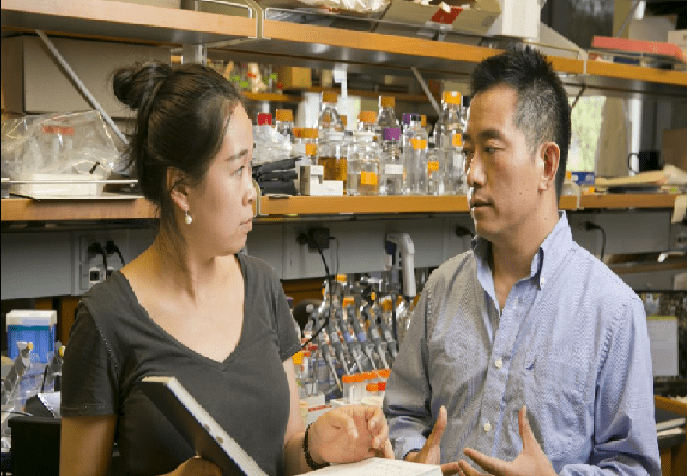Researchers Identify Chemical Signals That Cause Pattern Formation In Bacteria And Animals
Why do I look the way I am and not like you? Surprisingly enough, this question can appear as a valid argument to our nature of evolution and has already led brilliant minds to gather around and generate partially effective theories. Mathematician Alan Turing pictured a model to explain the non-linearity in nature’s production house. In an article named “The Chemical Basis of Morphogenesisâ€, he tagged the chemical reaction-diffusion theory to be responsible for the unique pattern of stripes in a zebra, the spots on a cheetah many more such examples.
Significantly, a group of researchers from Duke University has discovered a more pronounced method for production of these peculiar patterns. They simply call it a biochemical clock which generates due to the merging of two chemicals with a few variables. Originated time cues can uniquely fabricate patterns and also possibly fix them according to the species. The colonized patterns replicate in successive generations and are passed as genetic information.

The team: Lingchong You with colleague Will Cao
In the laboratory, the group has introduced a genetic circuit into a bacterial colony where a pre-programmed protein called T7RNAP marker (fluorescent blue coloured) is placed to bloom its original expressions and follow a positive feedback path. The experiment shows that with the reproduction of a new bacteria, more T7RNAP is generated. Additionally, it hits a chemical that triggers the T7 lysozyme (fluorescent red colour), which on the contrary inhibits the production of T7RNAP. Interestingly, whenever these two chemicals react with each other they give an output product similar to a purple ring shaped patch.
According to Lingchong You, a Professor at Duke University, the purple ring was more prominent in bacteria that groups in the boundary than bacteria that grew stacked in the interior part. The team discovered that they could control the specificity of the ring by varying the environment and nutrients. They finally concluded that bigger growth and more amount of nutrients faint the appearance of the patches. The complete report was published in the April 21 issue of the Journal “Cellâ€.
Source: #-Link-Snipped-#
Significantly, a group of researchers from Duke University has discovered a more pronounced method for production of these peculiar patterns. They simply call it a biochemical clock which generates due to the merging of two chemicals with a few variables. Originated time cues can uniquely fabricate patterns and also possibly fix them according to the species. The colonized patterns replicate in successive generations and are passed as genetic information.

The team: Lingchong You with colleague Will Cao
In the laboratory, the group has introduced a genetic circuit into a bacterial colony where a pre-programmed protein called T7RNAP marker (fluorescent blue coloured) is placed to bloom its original expressions and follow a positive feedback path. The experiment shows that with the reproduction of a new bacteria, more T7RNAP is generated. Additionally, it hits a chemical that triggers the T7 lysozyme (fluorescent red colour), which on the contrary inhibits the production of T7RNAP. Interestingly, whenever these two chemicals react with each other they give an output product similar to a purple ring shaped patch.
According to Lingchong You, a Professor at Duke University, the purple ring was more prominent in bacteria that groups in the boundary than bacteria that grew stacked in the interior part. The team discovered that they could control the specificity of the ring by varying the environment and nutrients. They finally concluded that bigger growth and more amount of nutrients faint the appearance of the patches. The complete report was published in the April 21 issue of the Journal “Cellâ€.
Source: #-Link-Snipped-#
0
